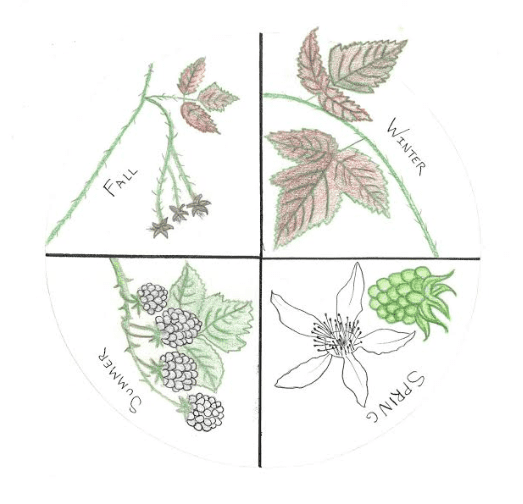
Harvesting Native Edible Berries of the North Cascades
This Naturalist Note is written by graduate student Darcy Page, as part of the Fall Natural History Project In North Cascades Institute’s M.Ed. Residency coursework. You can view other students’ work here.
The canon of the Honorable Harvest is poised to make its comeback, too, as people remember that what’s good for the land is also good for the people.”
~ Robin Wall Kimmerer, Braiding Sweetgrass
The intrigue and mystique of wild edible berries in the Pacific Northwest can conjure myriad associations. Humans, and other animals in the more than human world, have unique relationships to wild edible berries. I have been foraging my whole life and blackberries were the first wild fruit I could identify. I clearly remember the sights, smells, tastes and feeling of summertime foraging trips on the remote beaches of Whidbey Island. There was absolutely nothing like picking sun-warmed blackberries off of beach side cliffs and tasting the sweet, seedy juice. I still taste the memory of life affirming magic and wonder when I eat blackberries freshly plucked from barbed vines.
The Honorable Harvest, as described by the venerable indigenous author Robin Wall Kimmerer in her book “Braiding Sweetgrass”, outlines how to ask for permission before taking from the wild. In our culture of toxic taking, she promotes asking permission first and seeking an answer from the plant itself. Is the plant healthy and robust enough to harvest from? Respect it’s life by never taking more than half. Leave some for others. In the North Cascades National Park that means harvesting up to 1-2 quarts of native berries and leaving some for birds and others to disperse the seeds. If you do participate in eating the plant’s life giving properties, give thanks, share, and sustain the ones that sustain you. Kimmerer says if we do this Earth will endure.
In the Pacific Northwest berries are a classic example of a prolific wild food source since time immemorial. These berries hold incredible significance for the Coast Salish People. They were and continue to be a traditional food staple. Along with a deep appreciation, wild berries also require respect and close identification as some species can be dangerous if used incorrectly. The nutritional and medicinal power of these gifts of the Northwest deserves careful study and should be deeply honored and respected. Foragers are blessed in our rainy and wild region of the mountains with numerous edible berries that can be distinguished from their poisonous relatives after close observation. Start with building a relationship with the plant. The guide I illustrated and bound for my natural history project is meant to aid foragers along this berry path. Those who are new to foraging should always consult multiple resources and mentors. Never ingest a berry unless one hundred percent confident of what it is. Harvesters should read the subtleties of the plant as well as they can the nuances of a dear friend’s expression.
I believe that the food we eat influences who we are culturally and as individuals. For anyone interested in the local food movement and eating seasonally, foraging offers a direct and primordial connection to our place in the web of life.
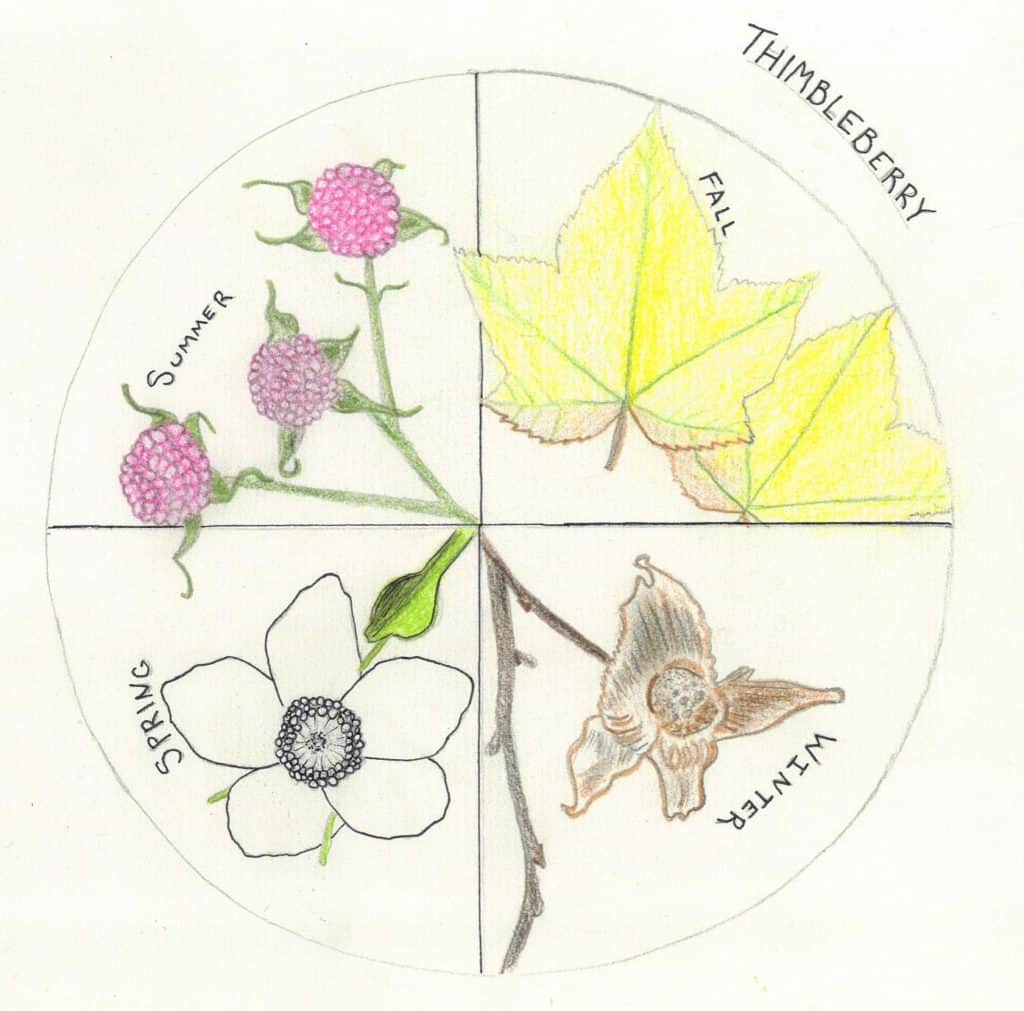
I have included a few illustrations from my field guide of native wild berries. The intention is to acquaint foragers with five native edible berries that grow near the Environmental Learning Center at the North Cascades Institute. My artistic process for rendering these plants was very similar to my scientific discovery and research of them. I found that the scrutiny required to draw each plant helped me to become intimately aware of these berries and their variations. My handbound artist’s field guide includes phenology wheels for each berry with the intention of identifying these species with confidence in all seasons. Above is an an example of a phenology wheel of the Thimbleberry. 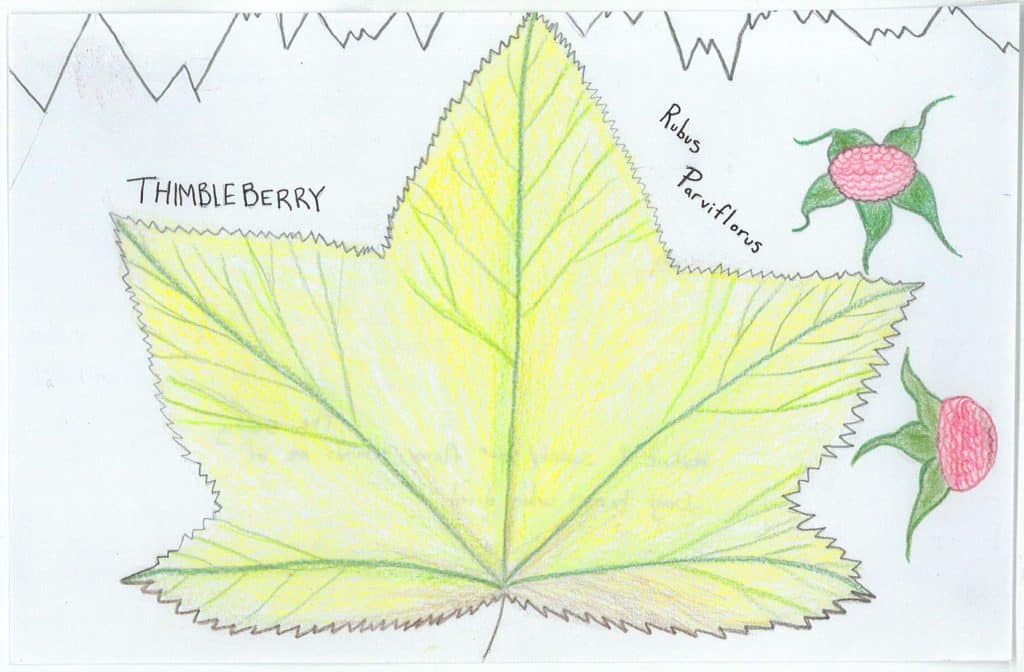
- Description: Thimbleberry is an erect shrub that grows in dense thickets
- Leaves: Deciduous and alternate, maple shaped with 3 to 5 finely toothed lobes
- Berries: Aggregate berries are seedy but also tart and sweet
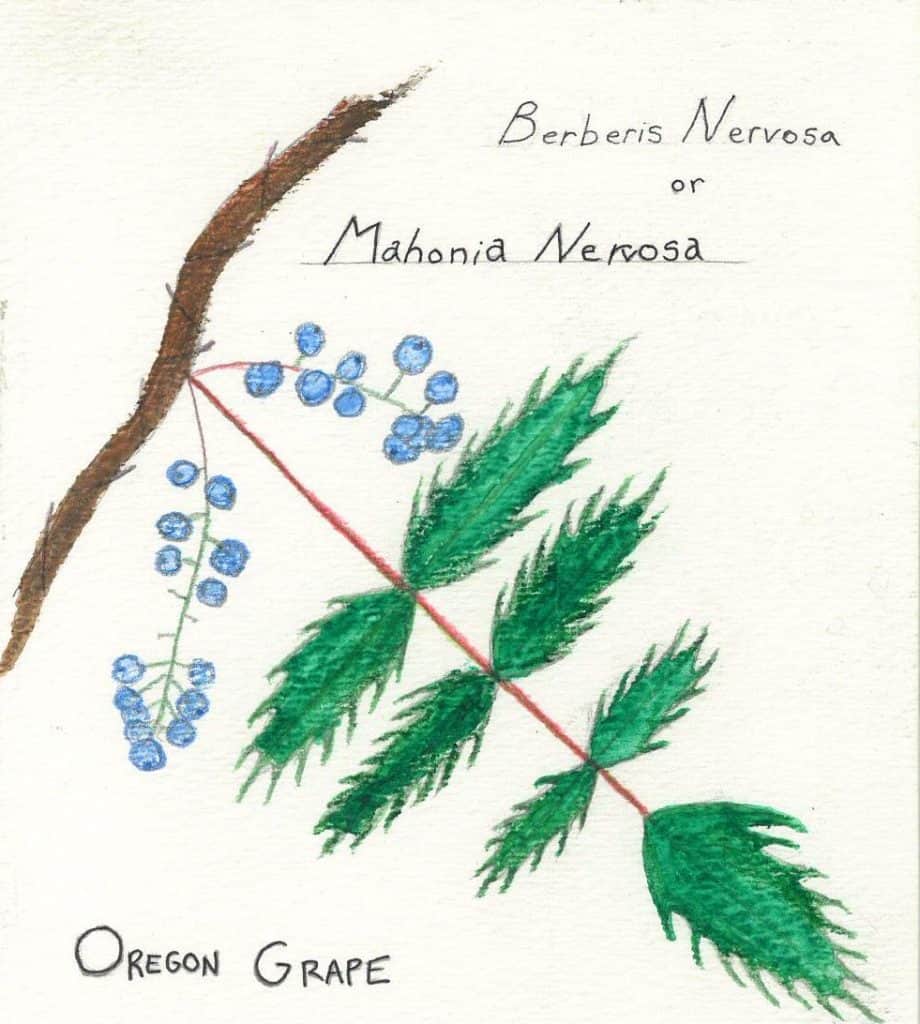
- Description: Dull oregon grape is a short evergreen shrub
- Leaves: Coarsely serrated
- Berries: Powder blue in color and 1 cm across
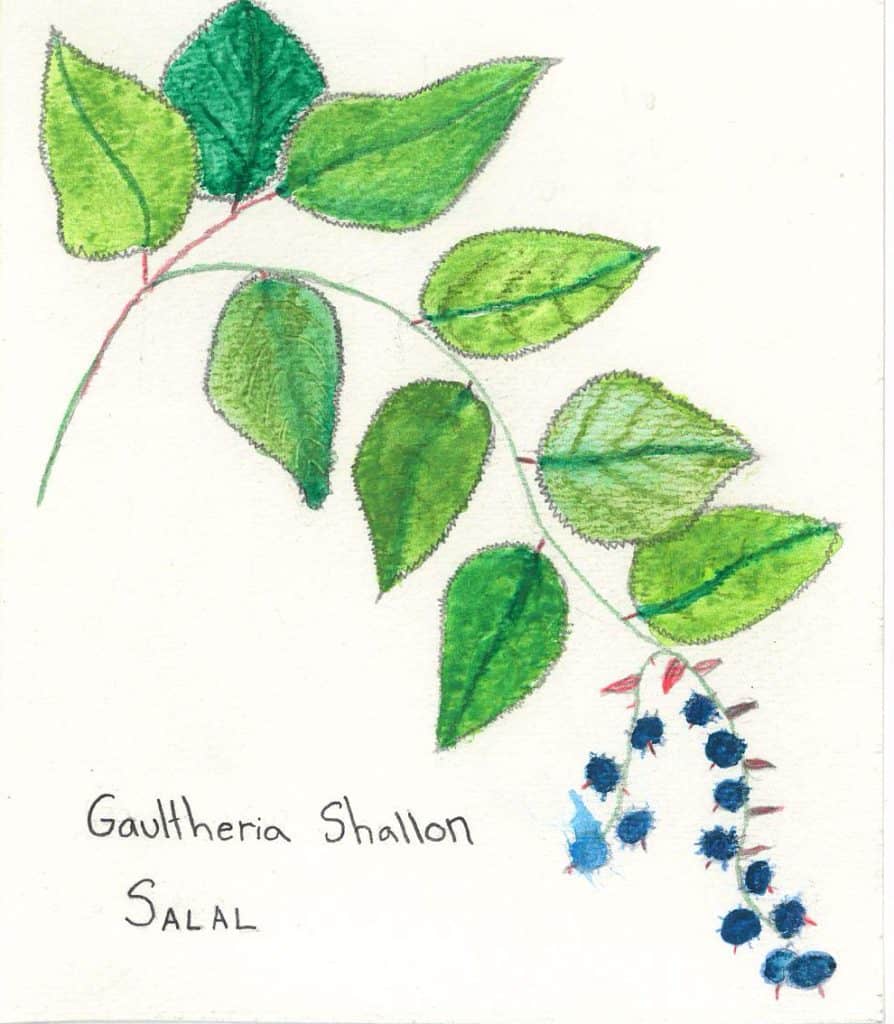
- Description: Salal is a ubiquitous low growing shrub in coniferous forests of our region
- Leaves: Alternate, evergreen, egg-shaped with minutely toothed edges
- Berries: Blue and hairy – taste ranges from bland to exceptionally sweet
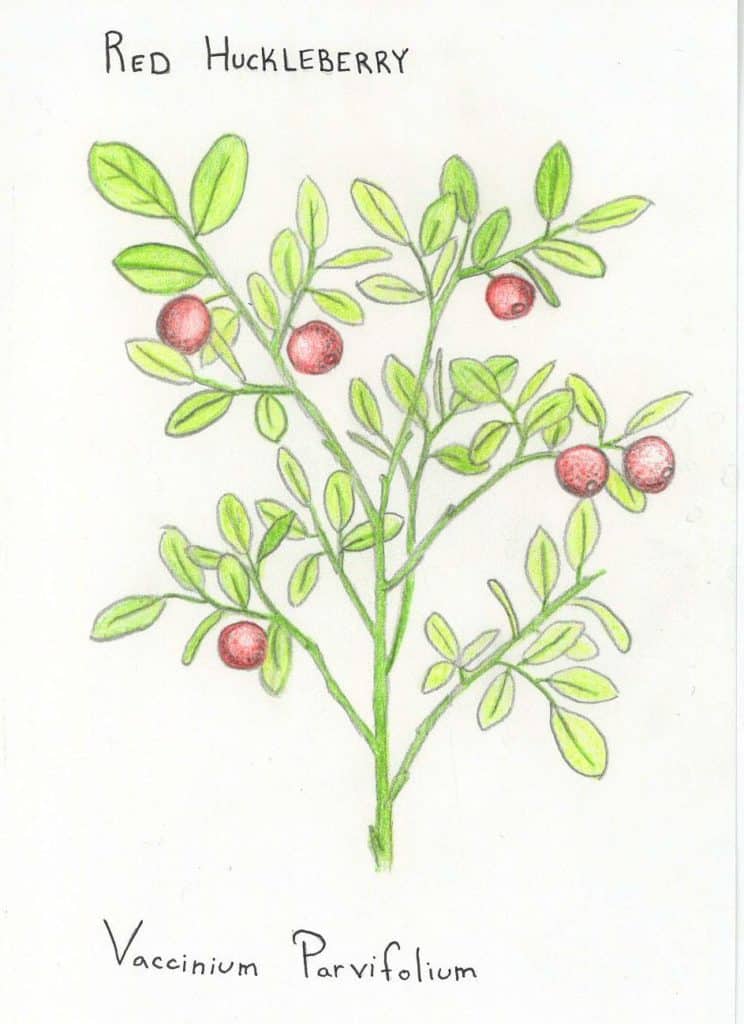
- Description: Red huckleberry is a deciduous shrub with bright green angles twigs up to 12 ft tall
- Leaves: 3 cm long, alternate and oval leaves
- Berries: Bright red
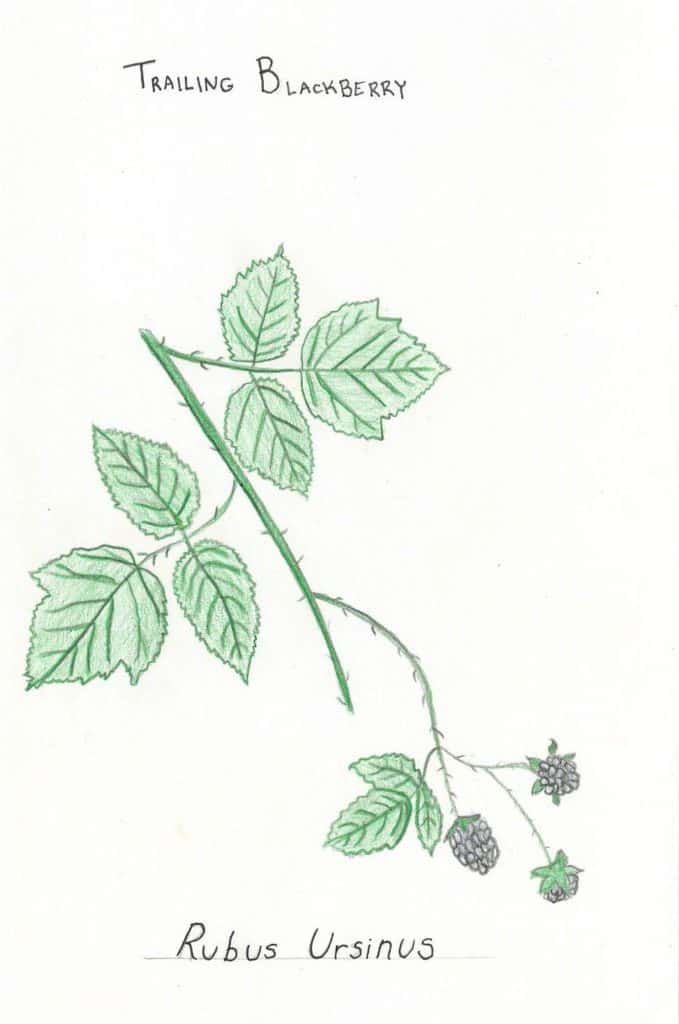
- Description: Trailing blackberry is a low growing, sprawling vine with sharp barbs
- Leaves: Persistent compound leaves of three that turn bright red in autumn
- Berries: Dark purple to black aggregate fruit


Where can I go to find chokecherries near Everett? Thanks.
“There was absolutely nothing like picking sun-warmed blackberries off of beach side cliffs and tasting the sweet, seedy juice.”
My new house allowed me to do this everyday when I went running this past summer… Currently deployed, makes me miss home even more!!
“There was absolutely nothing like picking sun-warmed blackberries off of beach side cliffs and tasting the sweet, seedy juice.”
My new Whidbey house allowed me to do this everyday when I went running this past summer… Currently deployed, makes me miss home even more!!
I have been a buyer and seller of berries from all over the world for 50 years. Did a recap today and forgot Thimbleberries. Was a Boy Scout in Seattle 1960-63. Our family company Richardson ànd Holland made a Cascade Mountain Blackberry ice cream topping in the 60’s and 70’s, and we made a Huckleberry ice cream base for Darigold in the 80’s.